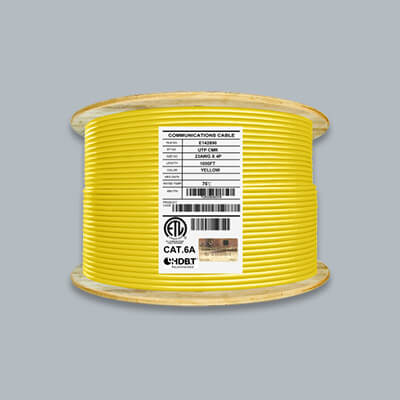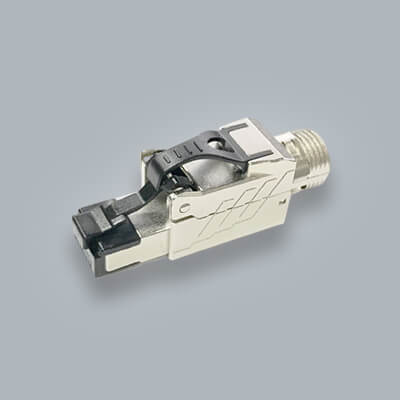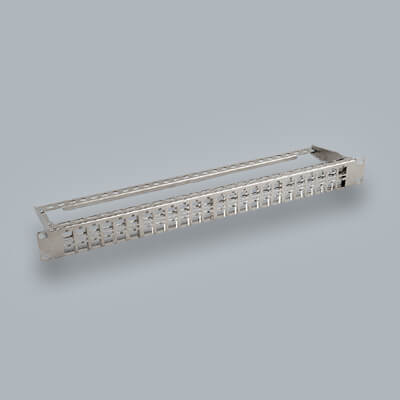Cat6A Shielded vs Unshielded

Looking to upgrade to a 10Gb network? Then it' likely you'll be looking at Cat6A cables as a option for your home or business network. These high speed cables are perfect for running 10Gb speeds up to 328 feet. They also reduce crosstalk between the pairs and can come in multiple versions. So this brings us to why you are here. Should we use Cat6A shielded vs unshielded cable?
Introduction to Cat6A
First we'll touch briefly on the performance of Cat6A cables. The major benefits you get with Cat6A cable is that it can achieve 10Gb up to 328 feet. While Cat6 cables can go 10Gb up to 180 feet this is under ideal conditions. You should keep the channel length for 10Gb on Cat6 as short as possible. This is where Cat6A shines if you do decide on a 10Gb network. Cat6A cable is built to run 10Gb all the way up to its recommended channel length of 328 feet. Anything more than that and signal strength can start to deteriorate.
With Cat6A unshielded and shielded cables you get improvements on crosstalk with a tighter twist ratio. This helps in reducing the interference between the pairs that can occur.
Cat6A Unshielded Cable
Cat6A cable comes in three different versions. These versions of Cat6A will be CM Rated (stranded), Riser and Plenum rated. For our Cat6A riser and plenum cables they come in unshielded and shielded types. Cat6A unshielded cable is a great choice for majority of installations in homes and businesses. Since Cat6A has a higher twist ration this helps in reducing interference that can occur on the wire which makes it suitable for just about any home. Cat6A unshielded cables come listed as UTP (Unshielded Twisted Pairs. This means that there is no shielding around the copper wires inside the cable. It connects to unshielded connectivity such as RJ45s, keystone jacks, couplers and more. Even though there is no shielding in Cat6A unshielded cable you can still use shielded connectors with it. If you happen to have some around (As long as it's Cat6A and above) they are certainly fine to use but its recommend to use unshielded connectors with unshielded cable.
Here's a sample pictures of our unshielded Cat6A plenum cable. Unshielded cable with have a insulation around the wires with no shielding.

Cat6A Unshielded cable is great to use in
- Homes
- Offices
- Commercial Buildings (No EMI)
Cat6A Shielded Cable
When EMI is in your location then shielded Cat6A is the go to choice. Cat6A shielded cable vs unshielded will have foil wrapped around all the twisted pairs of copper wires. The shielding inside ethernet cables aid in
- Preventing EMI/Signal interference from affecting your cables performance.
- Decreasing radiated signal from cables
- Decreases the effects of electrical hazards.
Some of the common areas that can emit EMI are:
- Radio Towers
- Electrical power lines
- Radars
- Engines
- Motors
- Broadcasting towers
- Doctors offices
- Hospitals
- Labs
- Factories
Getting good performance with your ethernet cables can be made easier with shielded ethernet cable. If you happen to be in areas listed above it would be advisable to install shielded cables.
Shielded Cables can come in many different variations. For the Cat6A cables we have here we have them in
- U/FTP: Common in stranded cable this structure has no overall layer of foil but each individual pair is shielded as this gives your cables more flexibility vs having an overall layer. At the same time giving your cable the benefits of shielded.
- F/UTP or FTP: Common in solid cable this structure has an overall layer of foil around all four twisted pairs. This gives your cable the protection it needs while performing over long distances.
Here's an example picture of our Cat6A shielded riser cable:

The picture above shows a FTP structures with shielding around all four twisted pairs all the way down the cables.
Deciding Which Connectors To Use?
When deciding whether to use Cat6A shielded vs unshielded its important to keep in mind the type of connectors you are going to want to use.
For Unshielded Cat6A cables you can use all unshielded connectors with the cables. This includes:
While our shielded RJ45s do have shielding its perfectly fine to use with unshielded cables. You are perfectly fine with using unshielded RJ45s you just just want to make sure that the connectors fit the width of the cable and wires. In this case Cat6A unshielded and shielded is 23AWG so look for connectors that are suitable for 23AWG.
For shielded Cat6A cables its important you keep the whole cable channel shielded. This is so you achieve the benefits of shielding all the way along your cables. For shielded this includes:
- Shielded Cat6A keystone jacks 180 degree
- Shielded Cat6A keystone jacks 90 degree
- Shielded Cat6A RJ45s
As for other connectors such as couplers you want to match the structure type of the cable to the connector.
Using wall plates you can use any standard size ethernet wall plate for the Cat6A keystone jacks. Just choose how many connections you want and that will decide how many ports you need.
Shop For Cat6A Cable
Cat6A Shielded & Unshielded: Get up to 10Gb speeds in any network condition. UL listed for industry leading safety performance. Coming on a spool for easy pulls. Large selection of colors available for cable management.
Shop Cat6A Cable
Conclusion
Deciding whether to use Cat6A shielded vs unshielded comes down to a couple different factors. Where you are installing the cables is one of the most important things to know when choosing which cable to purchase. For the majority of installations in residential unshielded cable will certainly be fine. For business this holds true as well but it's important to double check your surroundings and know what you will be working around. Cat6A cable is a great solution for any network and will have you up and running 10Gb in no time.





